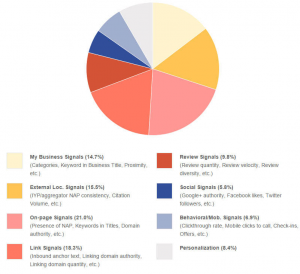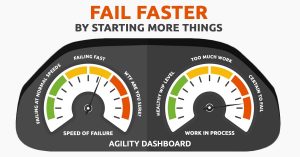CMOs must champion AI adoption in the enterprise, aligning AI initiatives with business priorities, empowering teams and navigating AI-related risks.

This article was co-authored by Nicole Greene.
Generative AI is opening the door for chief marketing officers (CMOs) to elevate their role in executive leadership. Marketing is at the forefront of businesses’ genAI adoption. Nearly 70% of enterprise marketers experimenting with the technology already implemented genAI or plan to do so in the next six months, compared with less than 54% of business executives across other non-IT functions.
Drawing on their early experience to address business challenges and support other departments, CMOs are uniquely positioned to lead enterprise AI adoption, particularly in three key areas:
- Connecting AI investments to business outcomes.
- Transforming the workforce.
- Confronting risks head-on.
Connecting AI investments to business outcomes
To maximize genAI’s potential, CMOs must link AI initiatives to measurable business outcomes, such as increased revenue and enhanced customer experiences.
For example, using AI in guided selling with the explicit intent to reduce returns can yield direct revenue gains that organizations can test and measure. It also delivers softer benefits, such as improving customer satisfaction and reinforcing the brand’s innovation values.
Some ways to create a strong business case with clear ties to outcomes include:
- Emphasizing how genAI can solve business priorities: Identify use cases that address crucial business outcomes such as revenue, profit and risk reduction and are the most feasible for the organization.
- Determining the strategy for adoption: The opportunity and options to bring GenAI into the organization can be overwhelming. From hyperscalers and martech vendors to agencies and point solutions, everyone is touting their AI/machine learning and genAI-specific capabilities. GenAI is part of the technology that marketing teams rely on daily, such as enterprise and martech solutions. Dig into specific use cases and compare potential GenAI applications to assess if they are fit for purpose.
- Creating a template for quick productivity wins: Marketing has rapidly increased productivity with improved access to content, better search capability, content creation and personalization and optimized advertising purchasing. Each area could be modified for use in other business contexts.
- Attributing value: Identifying the best ways to measure the impact of pilot programs is vital and may be among the most important lessons CMOs can teach other business unit leaders.
Transforming the workforce
Employees are nervous, particularly in light of recent statements from AI developers touting the technology’s ability to replace most advertising and marketing work in the next five years. When employees believe AI can replace their jobs, their intent to stay in their jobs for another year drops to 14% from 41%.
How CMOs choose to augment work will directly impact business results. Early breakthroughs in creativity and user experience are helping people access information and create digital experiences faster.
Using genAI in a marketing team’s routine daily work frees them up to do higher-level, more impactful creative ideation, testing and analysis. To head off employee concerns:
- Create a community of discovery: Have monthly meetings to help early adopters on your team share how they use genAI applications, both within the enterprise and at home. This safe space builds a sense of community and supports the necessary shift in culture to drive adoption.
- Establish guardrails for responsible employee use: Develop helpful communication and guidelines, so your employees feel comfortable using genAI, given its inherent risks. Sensitize employees to major concerns, enhance trust in the organization and build employees’ sense of capability.
- Train your workforce: Enable creative teams to leverage genAI augmentation for not just creative execution but also dashboard development, analysis, drafting code and testing. Ask your external agencies to do the same.
- Promise new roles: As companies create new products and explore new ways to market, they can generate entirely new roles. The Institute for the Future and Dell Technologies predicts that 85% of the jobs in 2030 haven’t been invented yet.
Confronting risks head-on
As enterprises move beyond genAI tests into real-world pilots and deployments, discomfort over the technology’s risks is animating boardrooms and exposing marketing to charges of recklessness. Organizations should be concerned: 72% of consumers believe AI-based content generators could spread false or misleading information. Mishaps undermine trust, reputation and shareholder value.
Marketers are helping shape the formation of enterprise AI leadership councils to establish risk mitigation policies. On the tactical level, they operationalize practices to prevent, detect and respond to high-risk scenarios that undermine brand trust and cause reputational damage. These operations are called TrustOps, which include three main activities:
- Certifying content. Defining and applying standards of authenticity bolsters the trustworthiness of content produced by your brand. On the policy side, it includes defining usage and disclosure policies for GenAI tools — for example, requiring that images representing employees and customers use photographs of real people and that synthetic images be labeled as such. On the practice side, it means applying open standards such as Content Credentials in all stages of production.
- Listening for fake content. While media monitoring and brand protection practices are well-established, GenAI is amplifying and diversifying the nature of threats. CMOs are working with risk managers to broaden the scope of coverage for media monitoring — especially in social media. That will help organizations recognize threats in images and video clips, rather than just text and define new, automated response practices that go beyond issuing take-down notices.
- Engaging with stakeholders. AI tools can streamline compliance workflows and shorten approval cycles, enabling companies to get ahead of issues before they spin out of control. This capability is especially important in regulated industries with stringent compliance requirements. One solution is to combine legal and regulatory compliance with brand compliance into a one-step process. Organizations that do this can improve customer relationships by offering timely, reliable and consistent information with more confidence.
As marketing departments pioneer this transformative technology and develop best practices for using genAI effectively, CMOs can prove their leadership value to the enterprise by offering concrete solutions to help solve their organization’s most pressing business challenges.
The post What marketing can teach the enterprise about AI appeared first on MarTech.
(4)
Report Post







